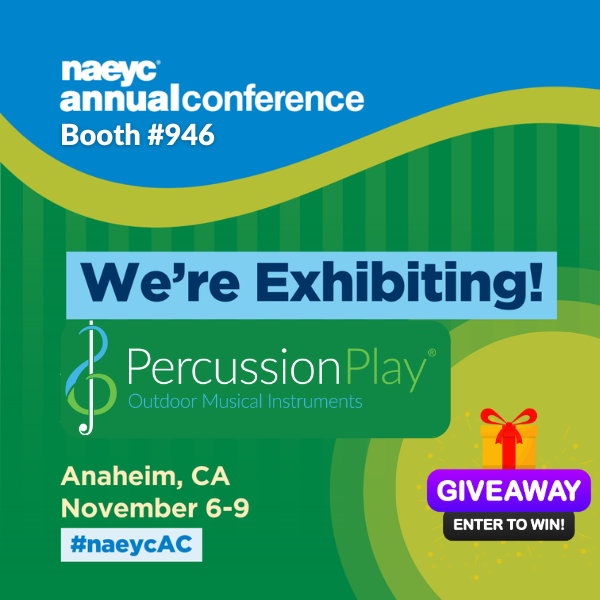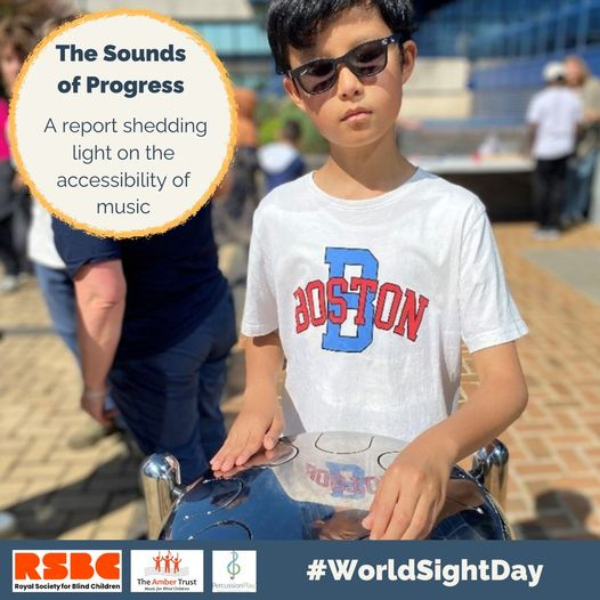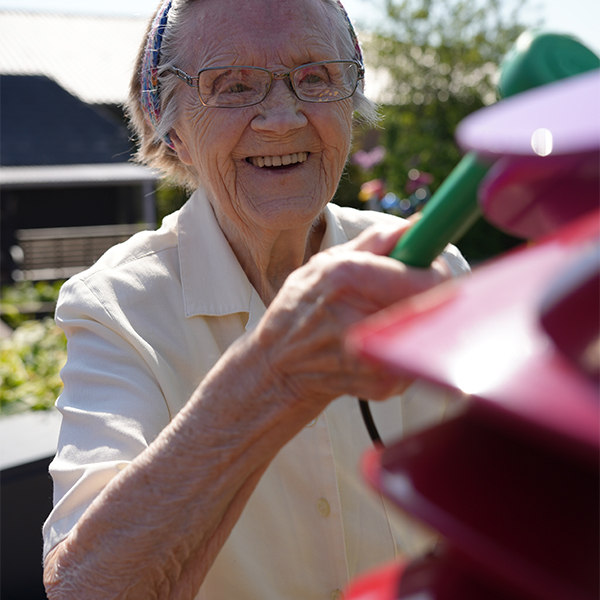Guide to Building the Perfect Musical Garden
Whether you are planning a new interactive sensory garden, or making an existing landscape more sensory-rich, there are so many benefits – happily all relatively easy to achieve. The design and layout of your musical garden, if you get it right, should provide a stimulating journey through the senses, with opportunities for seeing, smelling, hearing, touching and tasting.
Typically, sensory gardens are built in schools, colleges, children's centres, special needs units, hospitals and nursing homes. This shows the importance of the sensory garden in providing both a place to learn and play, as well as a place to relax and recuperate in peaceful surroundings.
Click Here to download our Musical Garden Guide.
Planting Firstly, consider the planting. All plants used should be child-friendly – no poisonous, sharp or prickly ones!
Ensure you’ll have year-round interest by planting lots of shrubs and perennials for the winter months, with bright stem colours or eye-catching bark – winter honeysuckles and grasses will help.
Everyone welcomes spring and visitors will love to see the early signs, so snowdrops, early daffodils and hellebores are good choices, along with other spring bulbs.
To add multisensory depth to your musical garden, choose flowers and shrubs that are highly scented, like the Mexican orange blossom, which gives out a fragrant, aromatic scent when the leaves are rubbed. Flowers, herbs, leaves – these can all give off a wonderful fragrance. Timber smells great when it dries out too.
All plants must be non-toxic, hardy and sturdy enough to withstand handling. Look for textures like soft flowers, fuzzy leaves, spongy moss, rough bark, succulent leaves and springy seed pods. Visitors can enjoy breaking off leaves to smell or taste.
Herbs like mint and chives will provide both scent and taste opportunities. Fruiting plants like cherry tomatoes, strawberries, blueberries and edible flowers add beautiful colours, flavours and aromas. Visitors will love the textures and fragrances of sage, rosemary, thyme, tarragon and parsley.
Sounds can be created by the plants too – visitors will hear the wind rushing through the leaves, grasses waving in the breeze and the rattling of seed pods.
Access Sensory music garden pathways and trails should not only be easy to access: they should be an invitation to take a closer look, a promise that there’s more to see. The best pathways will draw visitors into the musical garden and make them want to see what’s ahead.
For the hard landscaping, there are plenty of options to consider: concrete, stone paving slabs, treated timber decking, gravel, wood chips and crushed stone, to name but a few. Whatever materials you use, they need to be sympathetic to the surroundings. Most of the outdoor musical instruments can be installed directly into the ground with surface fixing plates or fitted to walls.
Varying the width along the route can make the path more interesting and can indicate ‘destination’ points, such as musical instruments, seating or a water feature. Consider a contrast between the path and edging for added interest. From an accessibility perspective, high-contrast colours will help visually impaired people find their way around independently, as wider paths will help wheelchair users.
The Music Obviously, the crucial element to your sensory musical trail or garden is the outdoor musical instruments themselves. With instruments installed in strategic spots along the way, the performances of the visitors will resonate throughout the garden.
Adding musical instruments to your sensory garden creates a new and exciting way to discover music-making in the outdoors. Unlike a traditional music room, which can sometimes feel intimidating, a musical garden makes creating music a magical experience that players can freely enjoy while being inspired by the sounds of nature.
Imagine a tranquil walk that suddenly provides the delightful experience of playing a musical instrument in the great outdoors. All Percussion Play instruments would be suitable for a sensory garden, but the following would make particularly good choices:
Mirror Chimes Mirror Chimes will add both a visual and auditory element. The mirror effect will reflect the players’ faces as well as the surrounding plants and trees.
Babel Drum Although a drum, the Babel Drum produces mesmerizing gentle mellow tones that are neither brash nor loud – perfect for musical exploration in the fresh air. Often used by music therapists and for meditative purposes, a wide range of tones can be created through experimenting and developing different playing techniques.
Harmony Outdoor Xylophone Elegant, with an irresistibly beautiful sound and resonance, the Harmony Xylophone is perfect for melodic exploration. With its notes suspended harmonically in a C-Major pentatonic arrangement producing a bright, happy, sound.
Emperor Chimes Emperor Chimes can be installed in groups or individually. Large in sound and size, they produce a deep, resonant tone that you not only hear, but can feel as well.
Papilio The Papilio, with its name derived from the resemblance of its elegant shape to that of the butterfly, makes the perfect addition to a sensory garden. The Papilio can easily be played by 4 players and the pentatonic nature of the instrument means there are no wrong notes and any combination of sounds is pleasant.
Sansa-Rimba The Sansa-Rimba is easy to play and a perfect introduction to musical exploration and improvisation. Being small, it can easily be installed just off of a winding sensory path to provide an interesting stopping point for visitors.
Additional Garden Planning Shade For good year-round use, make sure your garden has shady areas. Plant trees or climbing plants over a pergola or use shade sails that can be removed and taken inside.
Wildlife Consider the wildlife in your garden and make friendly garden creatures feel welcome. Birdsong will fill the garden if birdbaths, bird-attracting plants, bird feeders and birdhouses are provided and maintained.
Insects and bugs naturally tend to occupy any garden. Some creatures like wasps, biting flies and mosquitos can be a nuisance. Unfortunately, there’s no way of kicking these creatures out of their natural homes, but you can limit their nuisance by keeping waste bins away from populated areas and ensuring regular maintenance and cleaning (especially if something sweet is spilled!).
With the right plants, you can attract more interesting varieties of creepy-crawlies to your sensory garden. Caterpillars, friendly bees, butterflies – even ones to keep the more annoying bugs at bay!
Seating Allow visitors to stop and ponder with seating at thoughtful intervals along your sensory trail. Place seating next to an instrument, so the player and listener or therapist can enjoy the experience together.
Signage Help your visitors find their way around with signposts and way markers. Point to key areas and instruments in your musical garden and label your most interesting creations!
Water Water features are perfect for bringing other sounds to the garden. Think waterfalls, fountains or naturally-occurring bodies of water. Make sure any potential water hazards are clearly marked, or that they’ve been blocked off effectively to limit any potential danger associated with water.
General Safety Exploring the outdoors is all about fun and adventure, but remember that there’ll be little ones and vulnerable people in your musical garden at any given time. Make sure you’ve considered different head heights, abilities and the general safety of your musical garden so that everyone who visits has a fun and happy time, every time!


